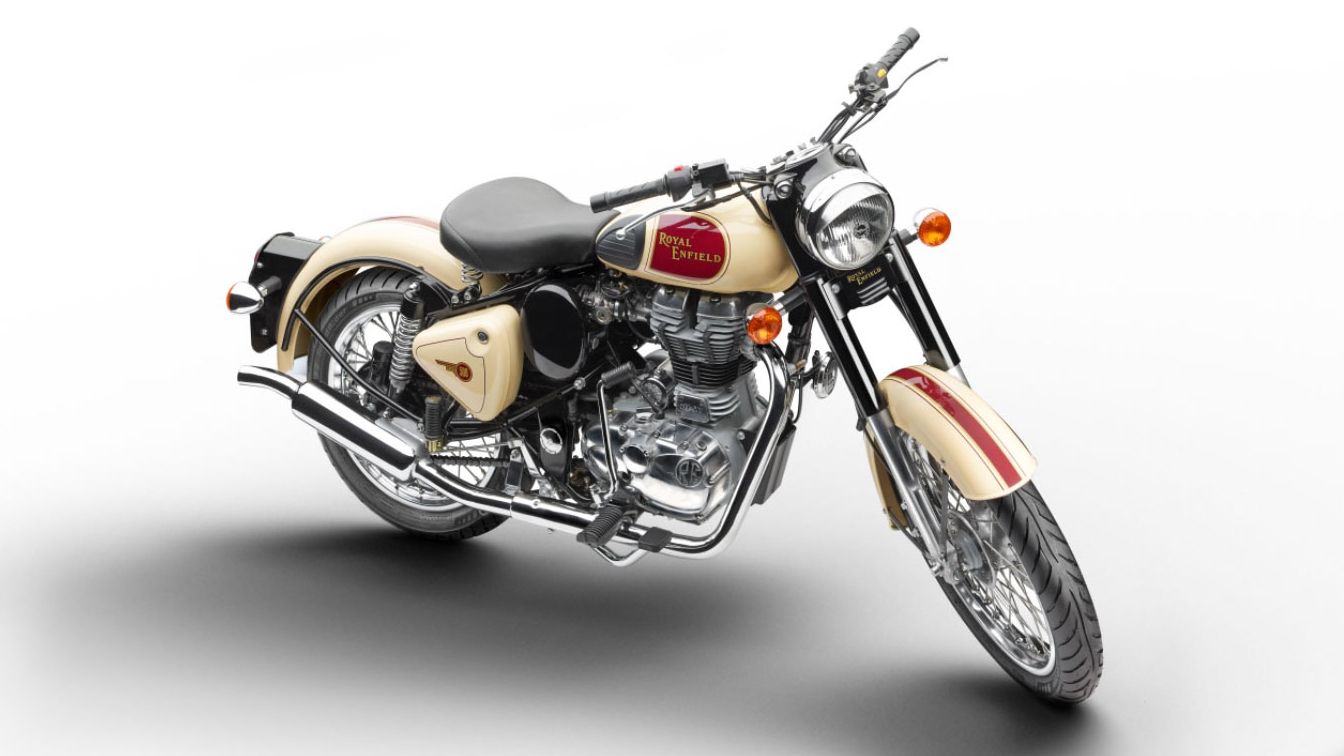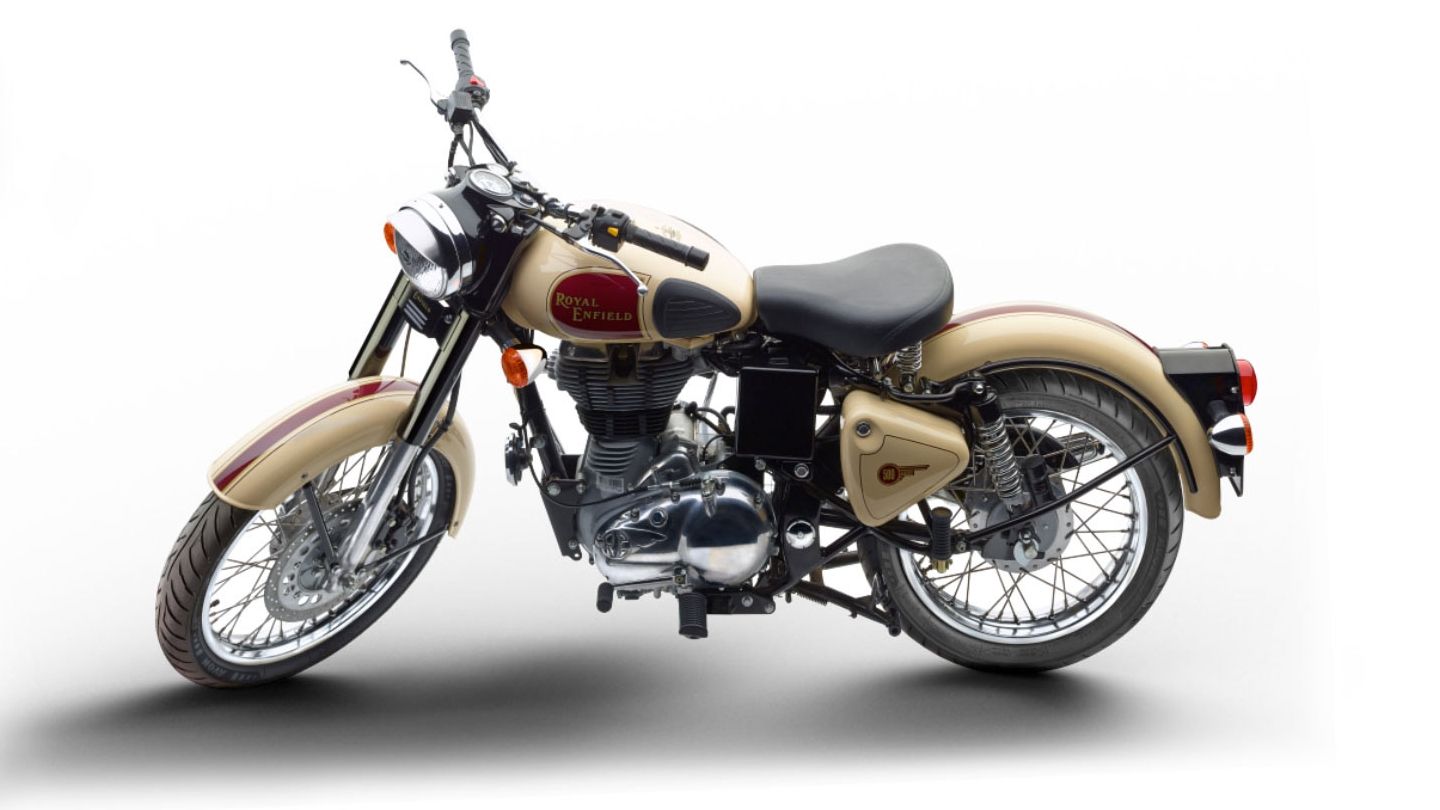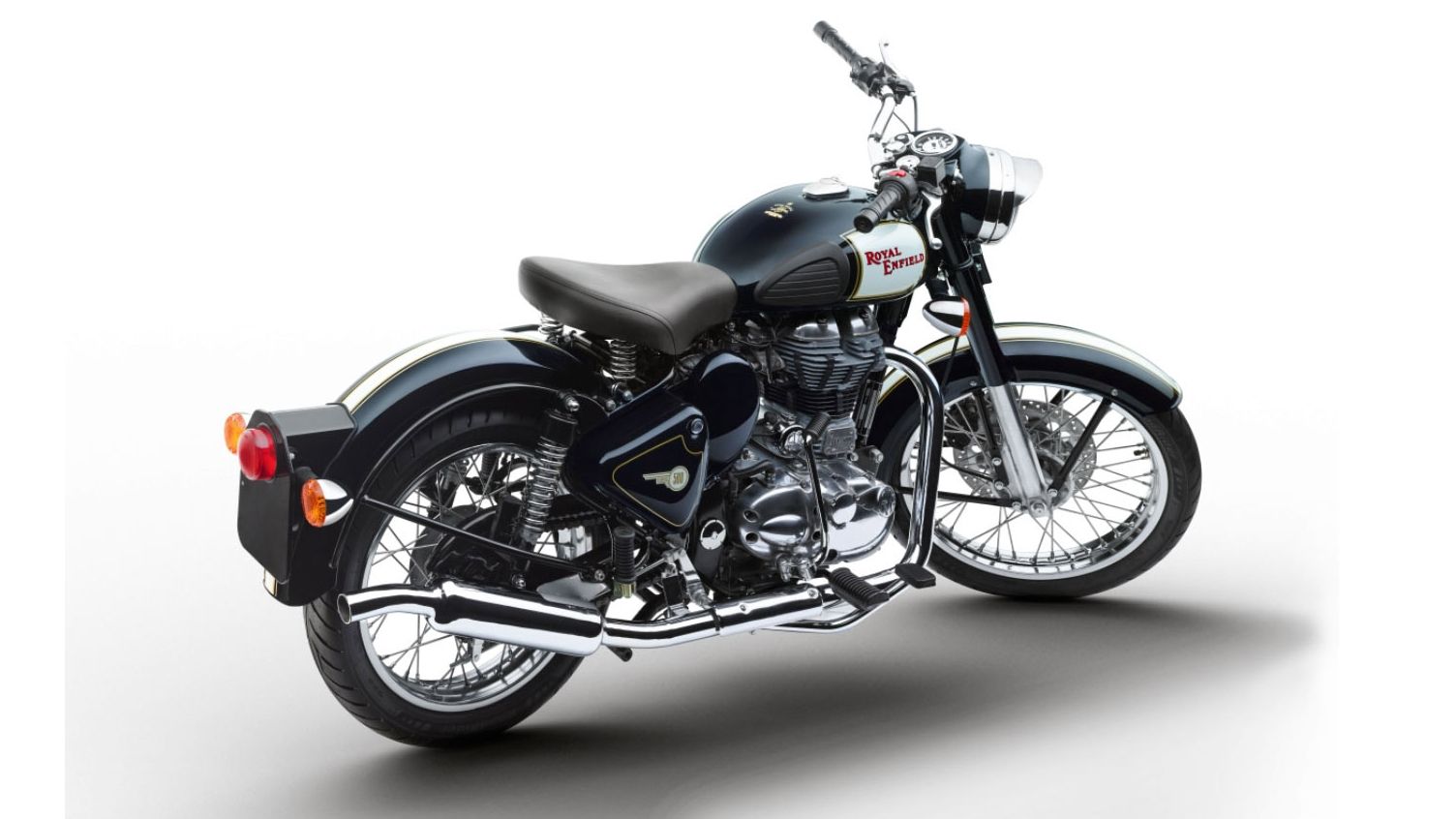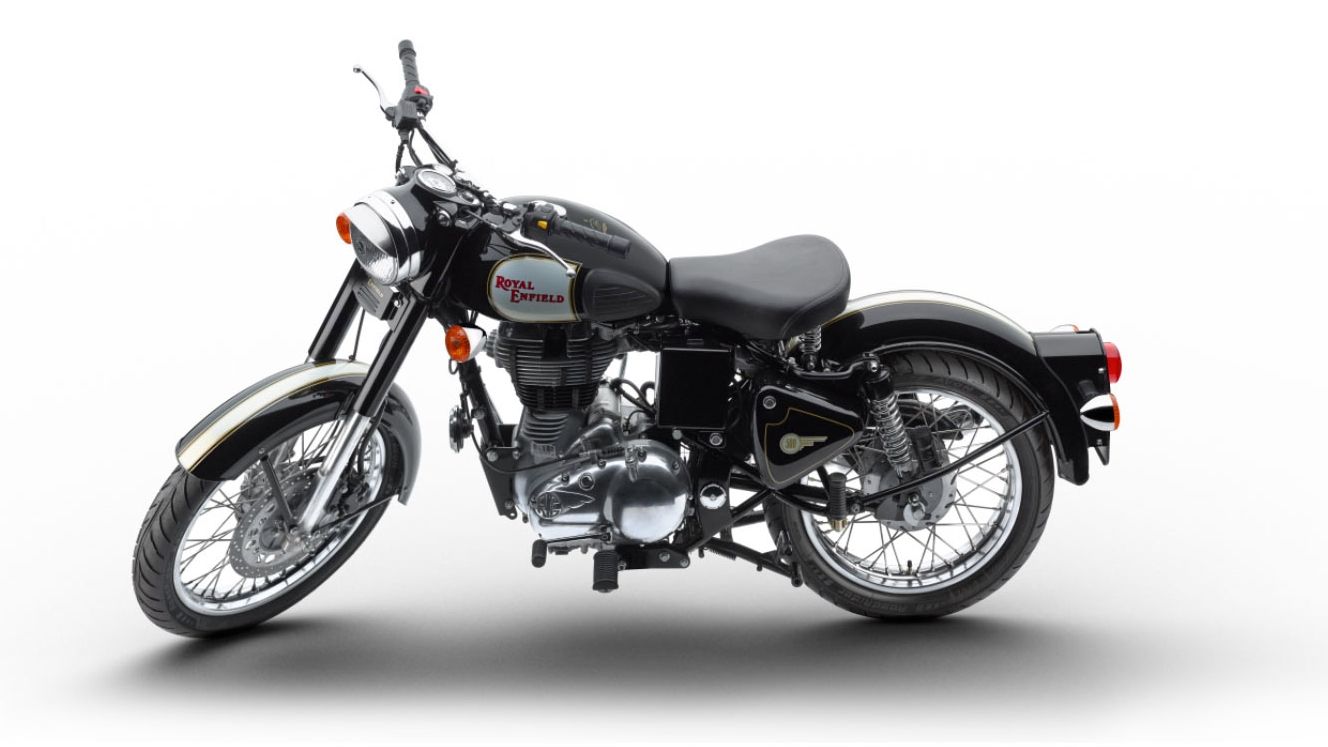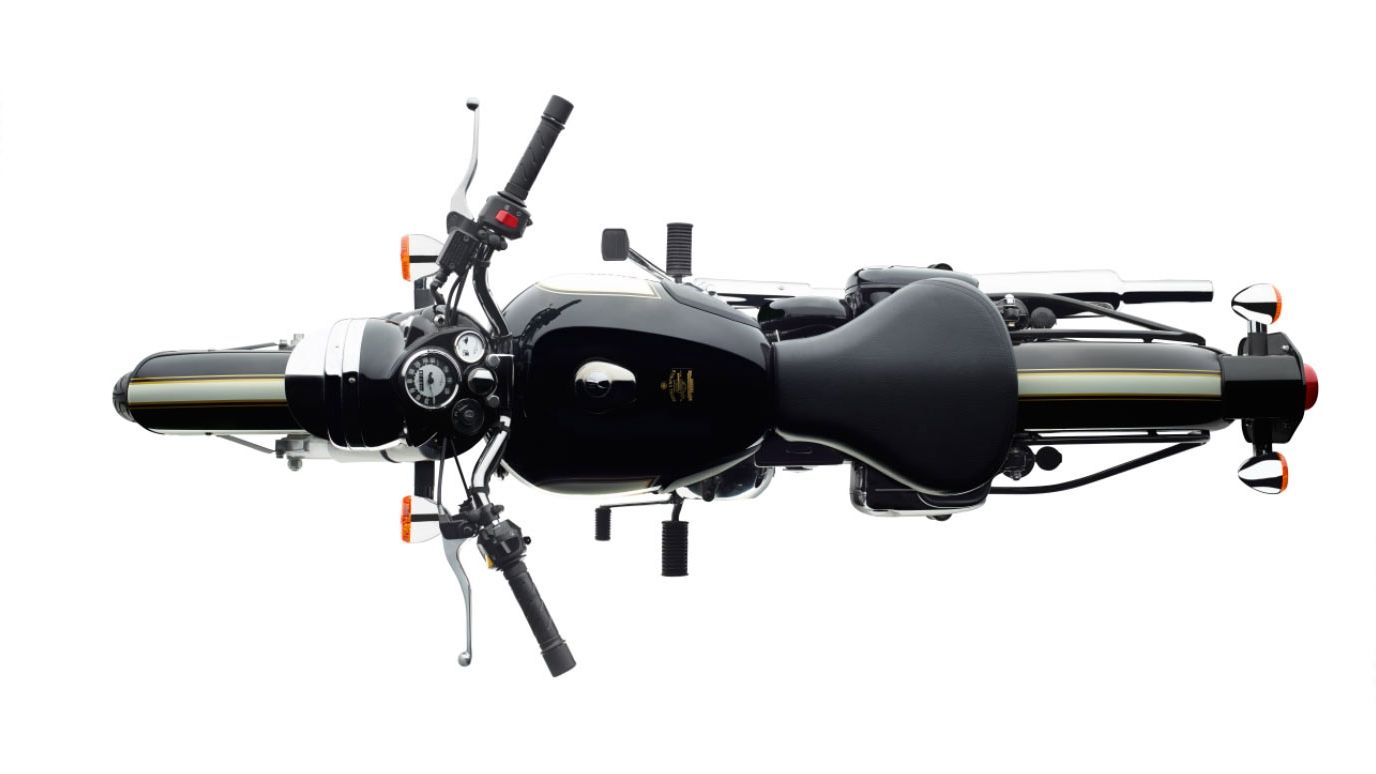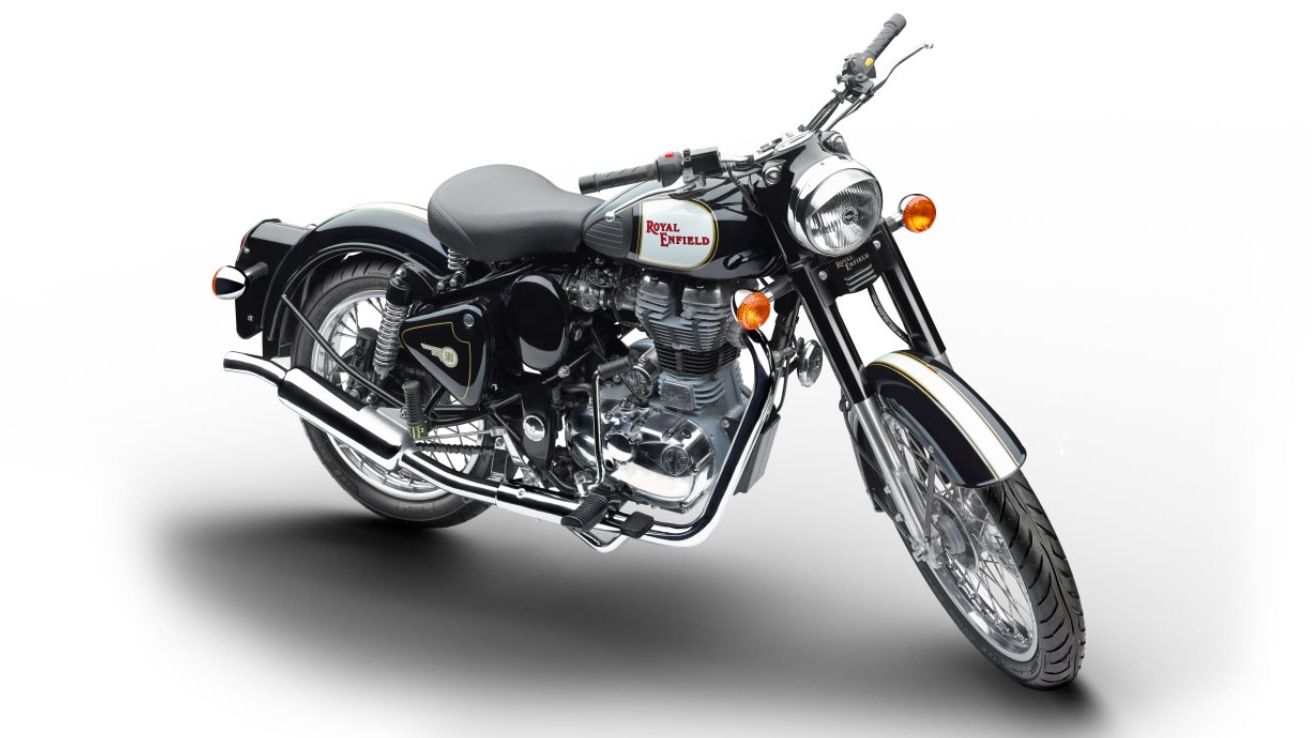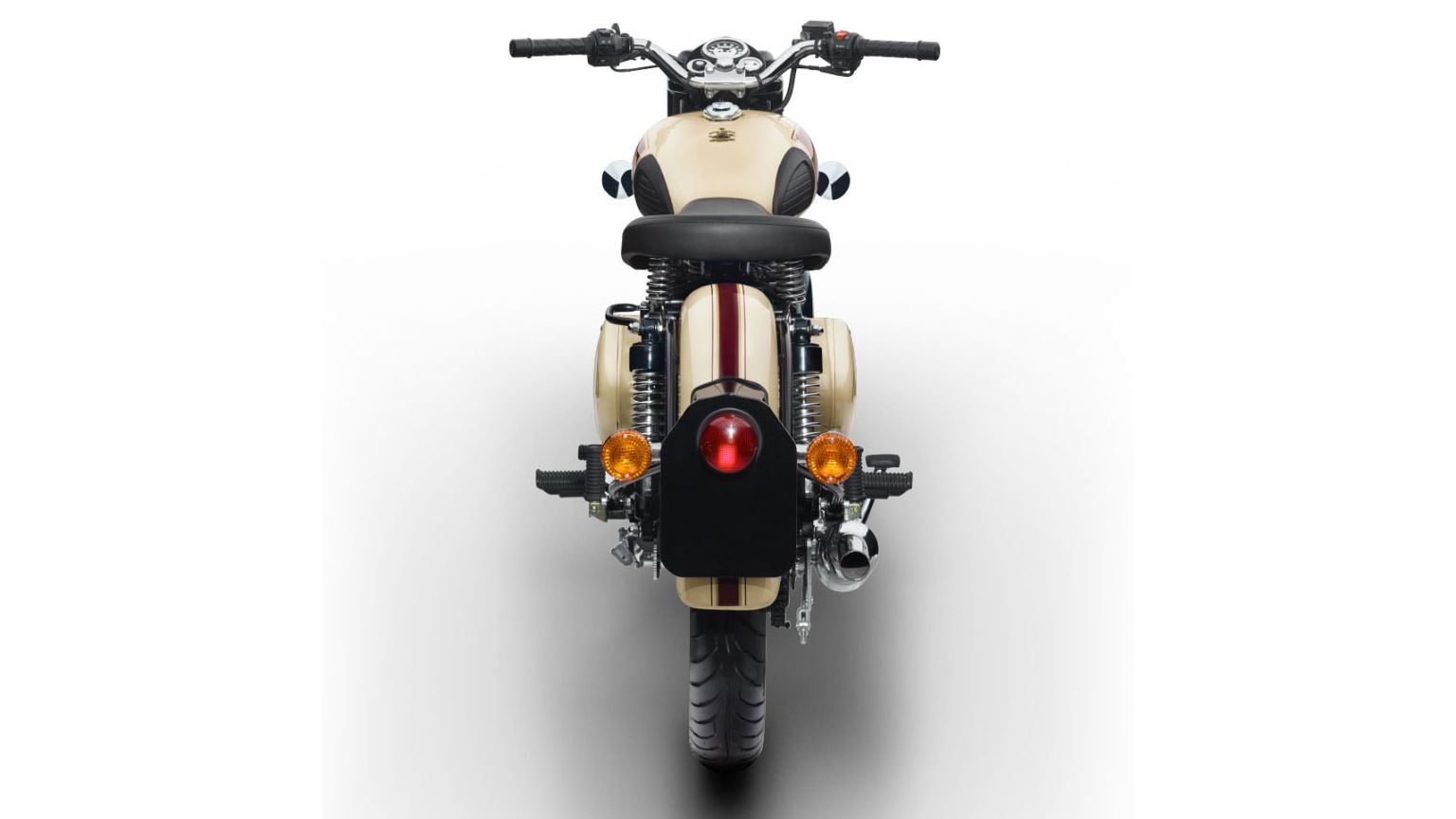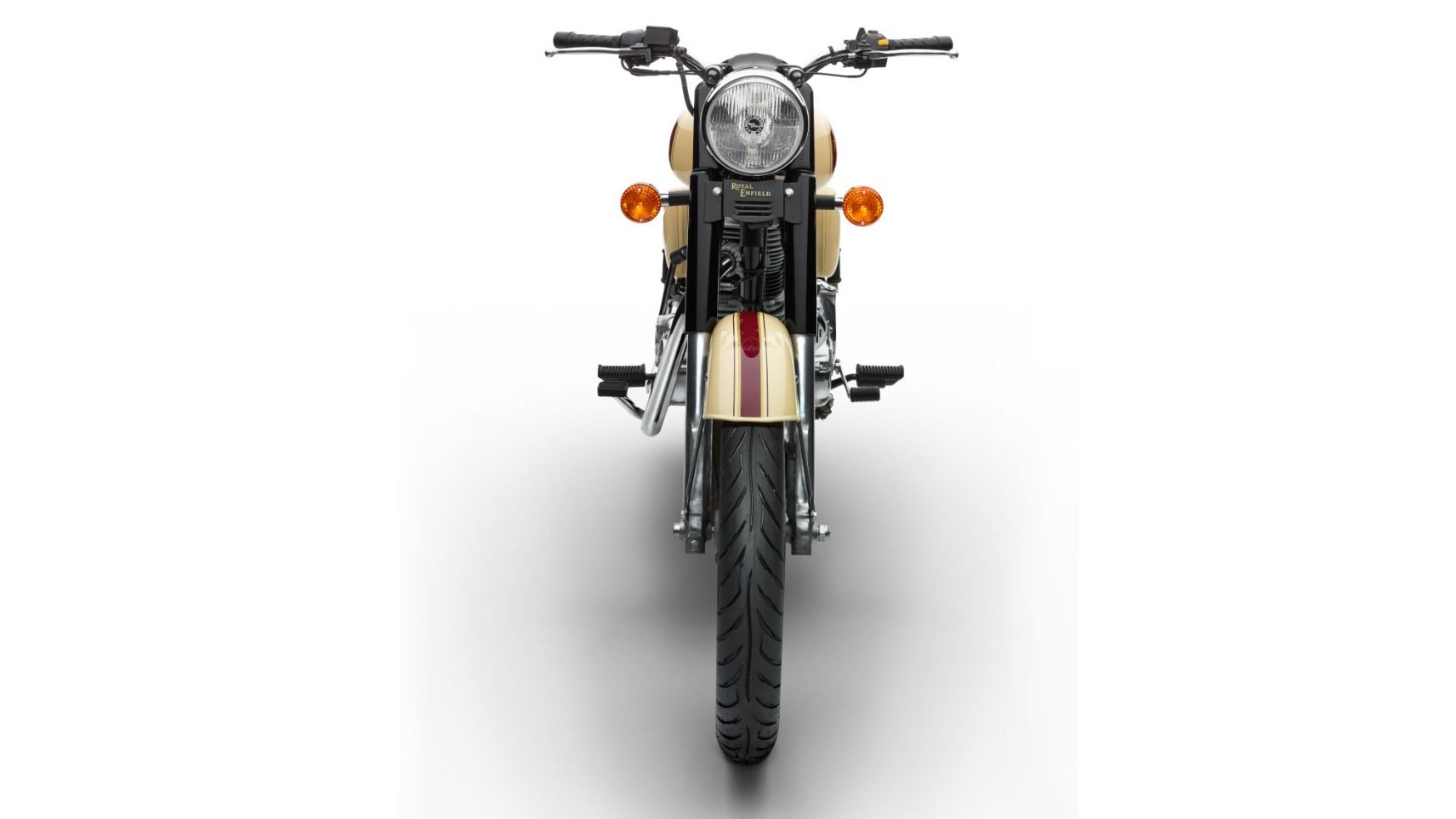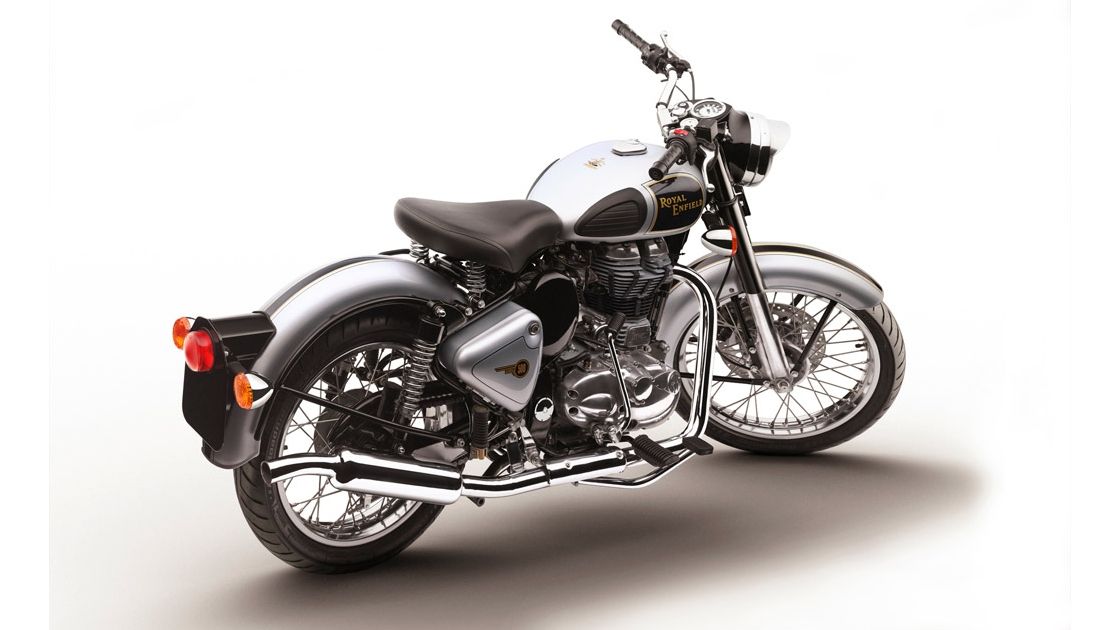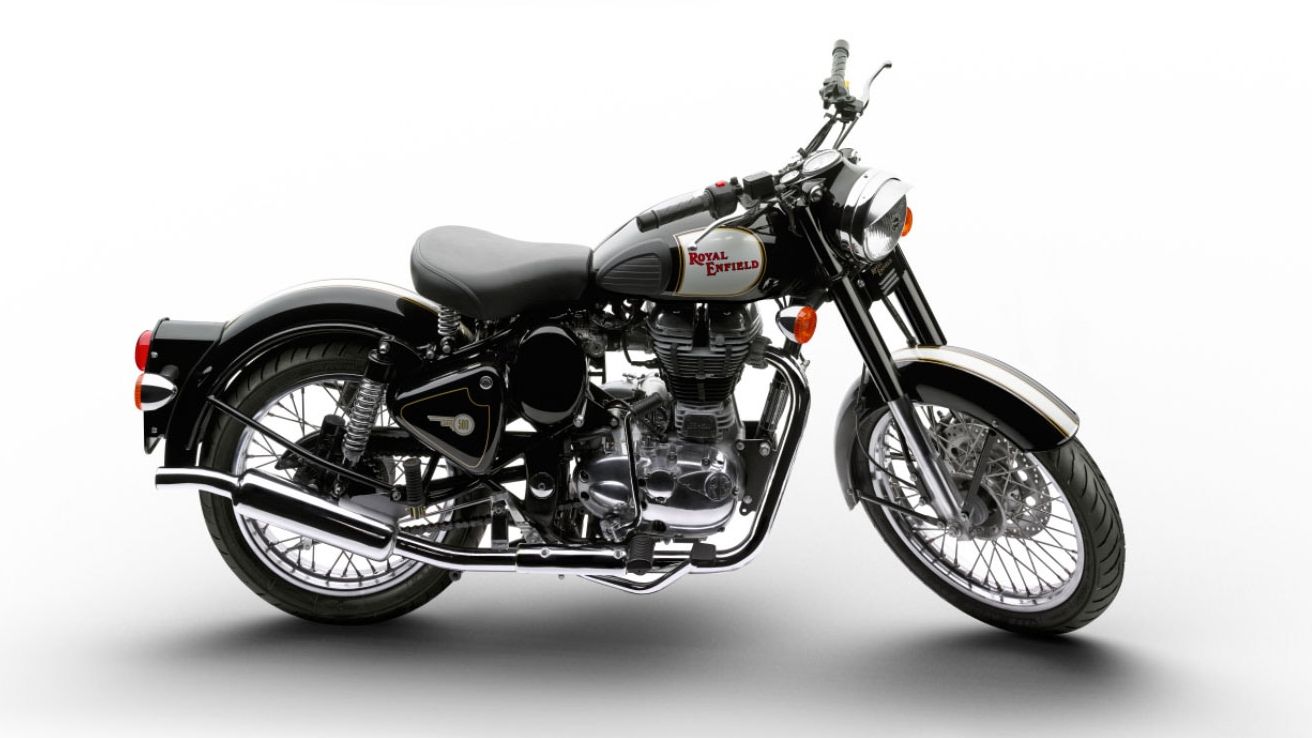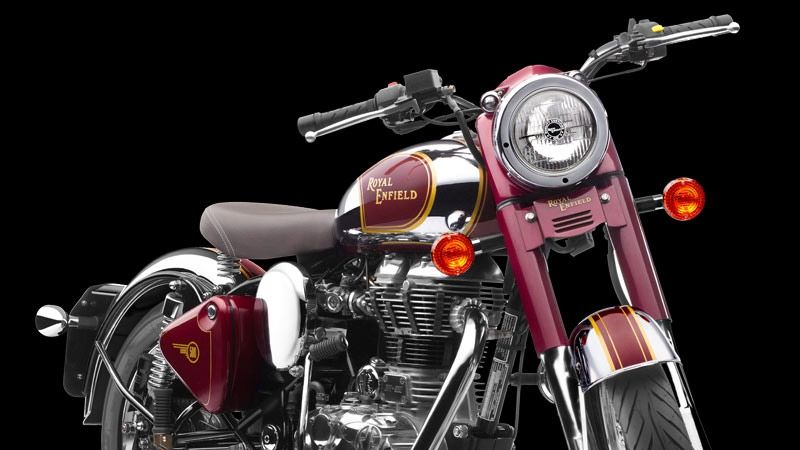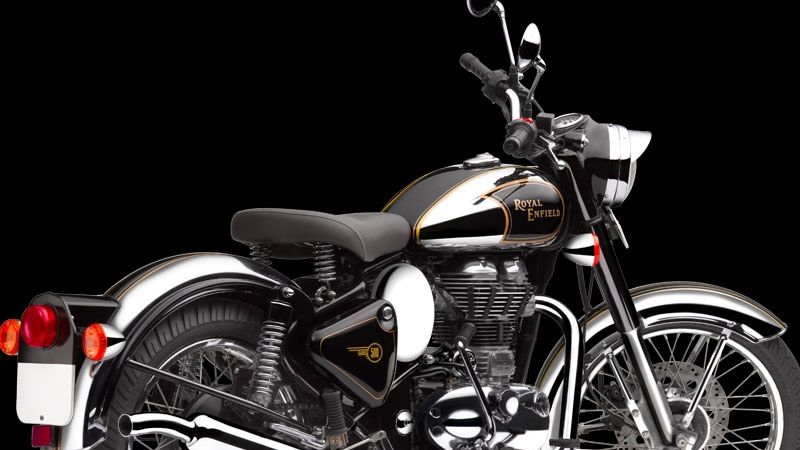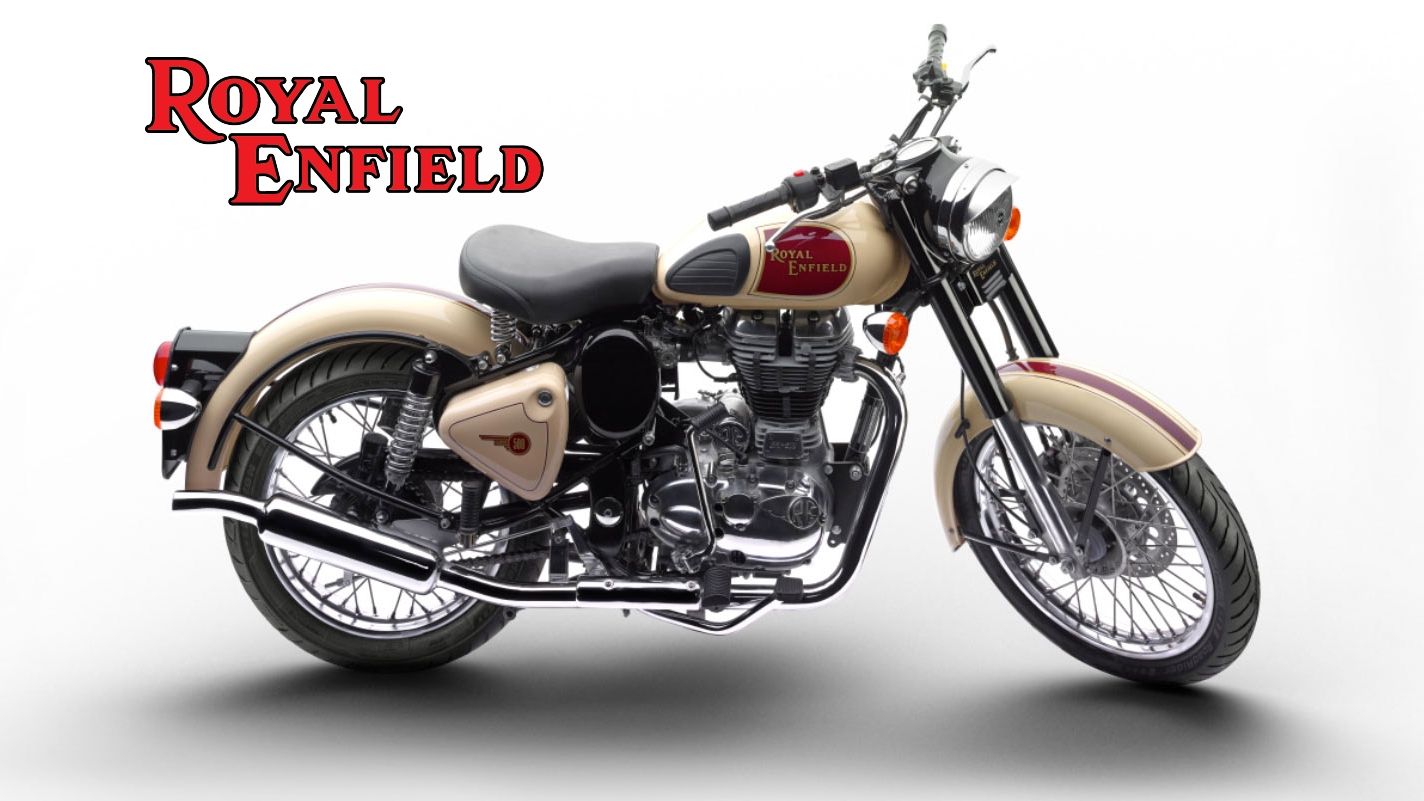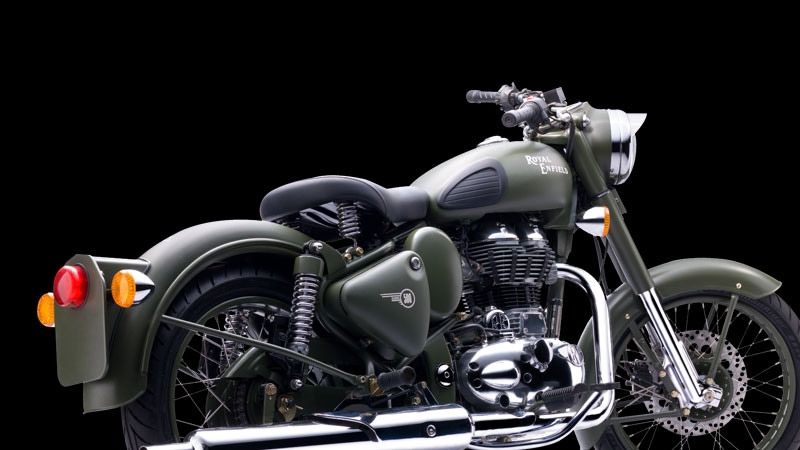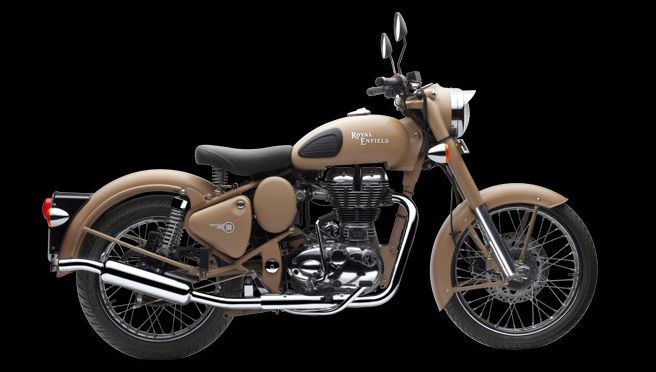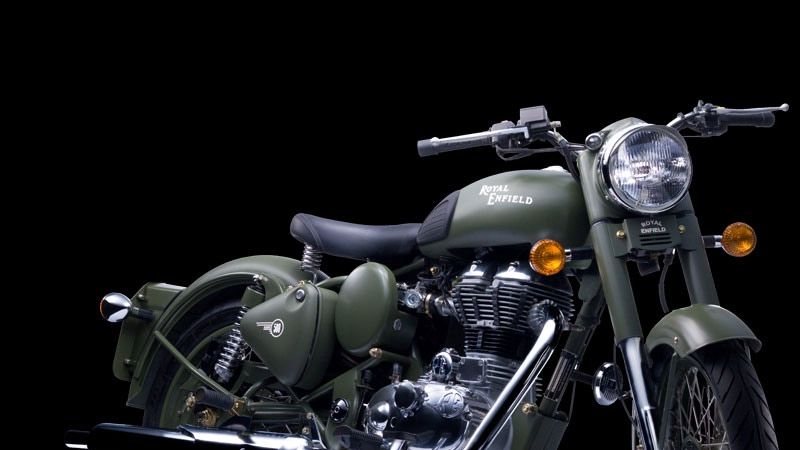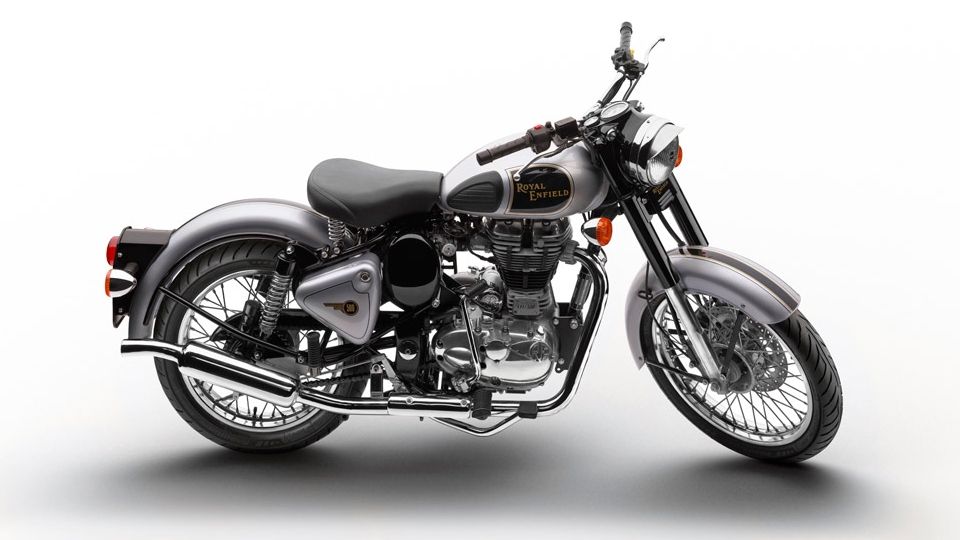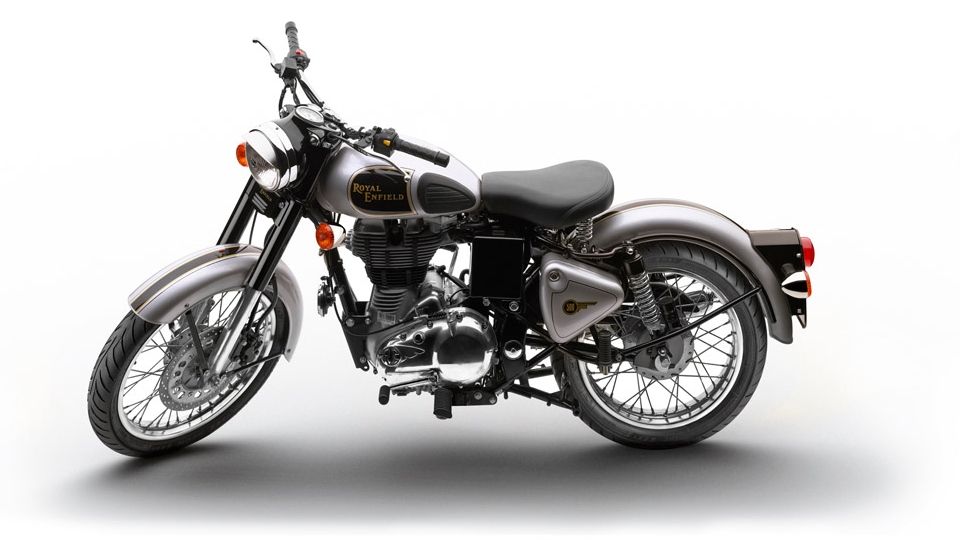Just a glance at the Royal Enfield->ke1968 (RE) Bullet->ke2971 C5 family is enough to transport you back to post-war Britain and India. I consider this family of bikes to be a historical treasure, a rare gem whose old-school charm fits right into the whole old-is-new-again, retro style making a comeback right now -- except the Bullets aren't retro bikes, they are the genuine McCoy.
After the war, the Bullet enjoyed quite a bit of success in India, and in 1955, the Royal Enfield trained the crew of the Indian factory that came online in 1956. The factory has been building 1955 Bullets ever since. Sure, they've made improvements in materials and methods of manufacture, and pitched the points and carburetor in favor of electronic ignition and fuel injection, but the 1955 Bullet is still there, wearing its simplicity and dated design like a badge of honor. Royal Enfield continues the bloodline with the 2015 Bullet C5 family, and each different sub-model references a specific part of the rich history of this sled. Join me as I take a look at this charming little bike in its various trim packages.
Continue reading for my review of the Royal Enfield Bullet C5 family.
2015 Royal Enfield Bullet C5
- Make: Array
- Model: 2015 Royal Enfield Bullet C5
Design
The family line starts out on a classic, British base. Elegant in its clean lines and simplistic layout, it just oozes '50s “Britness” just by being itself -- no special retrofitting required. I'm not really sure how to categorize it. T'aint a Sportster->ke1818, a cafe' racer->ke3530 or a roadster->ke294, so I will just call it a small standard cruiser->ke392.
All three members of the C5 Bullet family come with a classic, sprung solo-saddle, clean rear fender and tank design right out of the history books. The differences between the three sub-models lie in the paint schemes. While the Classic comes in black, tan or silver with a fetching two-tone panel on the tank complete with knee pad and racing stripes on the fenders, the Chrome model follows the same racing-stripe design but with chrome in place of some of the paint on tank and fenders plus a chrome air cleaner cover. The Chrome is available with Royal Maroon or black stripeage, but no kneepads.
Both of these models hail back to the racing and street-burning glory days of the originals, but the Military version goes another route. Available in Battle Green, or the tan Desert Storm, the Military edition connects up with the history Royal Enfield shares with the Indian military, who've used the Bullet extensively through the years. The black kneepads and seat, along with the monochrome fork shrouds, sheet metal and air cleaner cover, give both colors something of a natural camouflage that adds to its battle-ready looks.
And, there you have it folks, a selection of paintschemes for a variety of tastes. I think the factory cast a broad enough net with this selection that they are bound to improve upon their 30,000-units per year sales average.
Chassis
RE started out with economy-of-weight and center-of-gravity in mind when it built the frame and the resulting skeleton fits the bill nicely. Tubular-steel members form the single-downtube, stressed-engine frame, and the absence of a cradle allows the engine to rest low in the frame -- a move that anchors the center-of-gravity down low.
The front end rides on 35 mm, right-side-up, hydraulic forks that come with fixed damping values, but provide 5.11 inches of travel, plenty for on-road work. Fork shrouds form a small headlamp nacelle, and come shot in the main color, or chromed, to carry the palette all the way down to the chromed (on all models) fork lowers.
Old-school, coil-over, external rear shocks support the yoke-style swingarm, and the chrome finish makes them part of the overall décor as much as part of the necessary hardware. At 3.14 inches, the rear wheel travel may not be exactly what you would call plush, but it's adequate, and it comes with adjustable spring preload -- the only suspension adjustment for the whole bike. The shock springs and seat springs sort of line up when viewed from behind, a happy little accident (maybe?) that really accentuates its vintage heritage.
A single, front disc brake represents one of the few really visible modern updates for the Bullet, and as jazzed as I am about the near-historical purity of this bike, I would wonder about the factory's sanity had they run the old drum brake up front. As it is, a twin-piston caliper and 280 mm disc replaces the old drum, for more positive braking in that most-important position.
Designers stuck to their vintage guns in back, and they rely on a 153 mm drum brake to get the job done. Given the wet weight of only 412 pounds, I'd say that's an acceptable risk, and it certainly adds to the panache. Laced, 19-inch rims round out the rolling chassis, and for once, I'm glad the factory put the whitewalls on the inside -- the black tires fit the look too well.
One nice, historical touch that all three sub-models come with would be the triangular, lockable toolboxes laid into the flanks in a void between frame rails. They are certainly cleaner than my old fork bag, and probably improve handling since the tools are closer to the rider, hence closer to center-of-mass.
Drivetrain
Naturally, the engine looks like it was torn from the pages of an antique sales brochure. The vertical, single-cylinder mill is almost stereotypical in its British-ness, and the graceful sweep of the side cases takes us back to a time when vehicles were part works of art, part social statement and part practical transportation. A chromed kickstarter seals the deal on the right tranny cover, and provides a nice backup to the electric starter. Yeah, it's hard to look cool if you die at a light and have to kick, kick, kick to no avail, but since the advent of electronic ignition and fuel injection, kicking a bike has never been easier. In addition, a bike this dated just begs to be kicked to life, especially if you have an audience.
The air-cooled, 499 cc thumper engine runs with Twinspark ignition for positive flame-front propagation, and the slightly undersquare, long-stroke mill generates 30.56 pound-feet of torque at 4,000 rpm. RE's Digital Electronic Ignition and Keihin fuel injection see to engine management and emissions control. (Plus, they make it easier to kickstart, wink nudge.)
A wet, multi-plate clutch binds the engine to the five-speed transmission, and a chain final drive completes the package. One thing I am proud to see is that the factory put the brake on the right side, and the shifter on the left, as per contemporary style, rather than the old backwards arrangement. I never could get used to that.
Price
The Bullet Classic and Military models will set you back a modest $5,499, a price that adds to its first-time-buyer appeal. Chrome costs more than paint, so the pricetag on the Bullet Chrome jumps up to $5,699, not a bad deal for all that bling. All three models come with a two-year, unlimited mileage warranty.
Competitor
Retro is hot right now, and it seems like everyone has something to offer. The Tuning Fork Company->ke301 conjured up the SR400 as its retro, standard light cruiser->ke392 in the style of the 50's and 60's Japanese imports. Not quite a faithful reproduction, the SR400 incorporates familiar, classic design features that, nonetheless, serve to act as nostalgia triggers. Yamaha draws off its own history for this look, and the result is faithful to the spirit of the era, if not a specific model.
It's tough to compare visually a classic Brit to anything else in the world, because nothing else looks quite like one. That said, both brands follow the basic “Standard” cruiser form popular back in the day, each in its own way. RE obviously took the safe route by changing as little as possible, visually anyway, over the years. Yamaha used a similar, single-downtube frame but turned it into a cradle instead of taking the stressed-engine route like RE did with the Bullet.
A two-up, banana-like uni-seat on the SR400 provides room for a passenger off the showroom, or room for a tall rider to stretch his or her legs, whereas the solo saddle on the Bullet will force you into the accessories catalog if you need more seating.
The 499 cc RE mill gives the Bullet a slight advantage over the 399 cc SR400 in displacement and power output. With a third-again less torque, the 21 pound-feet from the SR400 seems a little weak against the 30-plus pound-feet Bullet mill – a bit more of a performance offset than I expected the displacement difference to be able to explain away.
Both rides come with electronic ignition and fuel injection, so neither gains an advantage there. They also both sport kickstarters, though Yamaha takes it to the Nth degree by offer the SR400 as a kick-only model, no electric starter at all. I don't know whether to question Yamaha's sanity, or applaud their confidence in their engine management systems, but that was a bold move. The reader is free to weigh the merits either way, though I will offer that engines this small are really easy to kick over, and I bet almost no one ever breaks a leg on the kicker anymore.
Yamaha comes out sticker-proud, but only by a slim margin. The most expensive Bullet goes for $5,699, and the SR400 is only $300 more, not enough to be a deal breaker by any means.
He Said
“I can't tell you how much I've enjoyed looking at this little bike. Of course, I recognized the name, but somehow I had the idea that RE was a long-defunct entity. Imagine my delight when I discovered them still at it, and still making the old Bullets! Of all the bikes on my “like to have” list, this has to be at the top of the bar-hopper category now. Absolutely adorable and unequivocally British in design, the Bullet family has a lot to offer someone looking for an entry-level ride, or just a neat-but-functional piece of history.”
She Said
My wife and fellow writer, Allyn Hinton, says "The Bullet has been in continuous production for 65 years. That says something. With the old-is-new-again revitalization in bike styles, this bike is seeing a resurgence in popularity. It's very simple in design -- no frills -- but that's okay. It is what it is and it makes no apologies for that."
Specifications
|
Drivetrain: |
|
|
Engine: |
Single Cylinder, Four- stroke, Twinspark, Air-cooled |
|
Displacement: |
499 cc |
|
Bore x stroke: |
84 mm x 90 mm |
|
Compression Ratio: |
8.5:1 |
|
Maximum Torque: |
30.5 Pound-Feet @ 4,000 rpm |
|
Ignition System: |
Digital Electronic Ignition |
|
Clutch: |
Wet, multi-plate |
|
Gearbox: |
Five-Speed Constant Mesh |
|
Lubrication: |
Wet sump |
|
Fuel Supply: |
Keihin Electronic Fuel Injection |
|
Air Cleaner: |
Corrugated Paper Element |
|
Engine Start: |
Electric/Kick |
|
Chassis: |
|
|
Chassis: |
Single downtube, using engine as stressed member |
|
Chassis: |
Telescopic, 35 mm forks, 5.1-inch travel |
|
Suspension, Front: |
Twin gas charged shock absorbers with five-step adjustable preload, 3.1-inch travel |
|
Suspension, Rear: |
280 mm Disc, Two-Piston Caliper |
|
Brake, Front: |
153 mm Drum, Single Lead Internal Expanding |
|
Brake, Rear: |
3.25 x 19 |
|
Tire, Front: |
3.50 x 19 |
|
Tire, Rear: |
|
|
Dimensions: |
53.9 inches |
|
Wheelbase: |
5.3 inches |
|
Ground Clearance: |
Classic - 86.6 inches, Military & Chrome - 85 inches |
|
Length: |
Classic - 31.98 inches (Without Mirror), Military & Chrome - 31.5 inches |
|
Width: |
Classic - 44.1 inches (Without Mirror), Military & Chrome - 41.3 inches |
|
Height: |
|
|
Details: |
412.3 Pounds |
|
Curb Weight (with 90% Fuel ): |
3.2 Gallons |
|
Fuel Capacity: |
Two-Year Unlimited Mileage |
|
Warranty: |
|
|
Classic: |
Black, Tan, Silver |
|
Military: |
Battle Green, Desert Storm |
|
Chrome: |
Royal Maroon, Black |
|
Colors: |
|
|
Classic & Chrome: |
$5,499 |
|
Chrome: |
$5,699 |


